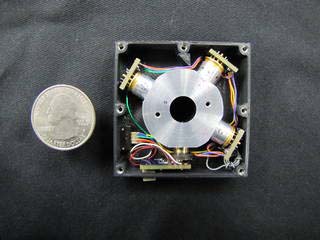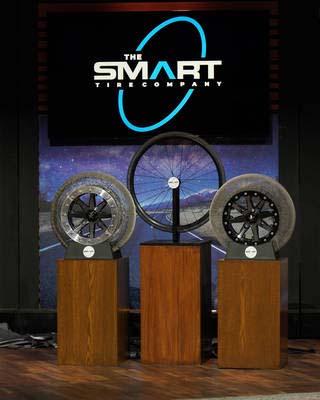NASA innovations are all around us. From infrared ear thermometers to the tiny cameras in just about everyone’s cellphones, NASA’s aerospace technology often makes life better on Earth.
At NASA centres across the country, Technology Transfer Offices connect companies with NASA’s inventions and technologies. The goal is to find the widest possible applications for NASA technology. The program works with businesses large and small. According to the Small Business Administration, about half of the jobs in the U.S. are in small businesses.

Multi-Parameter Aerosol Scattering Sensor (MPASS) sensors offer many licensing opportunities for environmental monitoring, first responders, unmanned vehicles, security and more.
Credits: NASA
NASA typically invents more than a thousand technologies each year and grants more than a hundred licenses, including special terms for no initial licensing fees for startups. NASA’s Glenn Research Centre develops technologies ranging from advanced materials for extreme environments to power and propulsion for space exploration and everything in between.
Many of these technologies have found good homes in US industry. For example, NASA Glenn has licensed its high-performance environmental barrier coatings that protect metal and ceramic components in aircraft engines.
Another material licensed with demonstrated success is polyimide aerogels, which are 500 times stronger than traditional silica aerogels. Aerogels are a translucent substance often used as thermal, electric, and acoustic insulators for aerospace applications.
The polyimide aerogels were first invented and used in a NASA project for deploying large area decelerators, like a parachute, to slow spacecraft in preparation for landing on Mars and other planets. One NASA licensee, Aerogel Technologies in Boston, is working with major international companies like Airbus and Ford Motor Company.
For Airbus, they are looking for new sound, thermal, and fire protection systems for airplane cabins. The polyimide aerogel offers these advantages at tremendous weight savings. The licensee is working with Ford on a sound and thermal insulation to reduce heat buildup and noise under the hoods of cars. Aerogel Technologies is also working with an apparel company to produce warmer lightweight clothing for winter.
“NASA’s polyimide aerogels have helped Aerogel Technologies to develop a variety of products,” said Amy Hiltabidel, licensing manager at Glenn. “There will be even more products using our inventions to come in 2022.”

NASA Glenn invented a shape memory alloy tire that returns to its original shape after undergoing deformation. Three versions of a shape memory alloy tire were displayed on set during a Shark Tank episode on Jan. 7, 2022.
Credits: American Broadcasting Companies, Inc. All Rights Reserved
Sensors and shape memory alloys
Innovators at Glenn also have developed and patented the Multi-Parameter Aerosol Scattering Sensor (MPASS), an aerosol detection system that characterises atmospheric particles, enabling real-time environmental monitoring often critical for public safety.
The sensors are ideal for detecting a diverse range of particles found in fire, pollution, emissions, and other atmospheric toxins. They offer many licensing opportunities for environmental monitoring, first responders, unmanned vehicles, security, and more.
“MPASS is getting a lot of attention,” said Harvey Schabes, chief of the Technology Transfer Office at NASA Glenn. “It’s a highly stable sensor system that doesn’t require calibration once it’s installed. A number of convenient features allow users to make the most of these sensors’ pioneering capabilities.”
Also commanding a lot of attention recently are shape memory alloys (SMA), a type of metal that can deform and then return to its original shape. NASA is using the material to develop airless rover tires.
The SMART Tire Company, a California startup, which has a license to develop and manufacture the SMA superelastic tire for bicycle and scooter tires, pitched ABC’s Shark Tank for funding. Although the Sharks didn’t bite with any investments, the company continues its work in a new research and development center in Akron, Ohio. SMAs could become a game changer across a variety of industries, including aerospace, automotive, biomedical, and more.
Featured image: Aerogels are a translucent and flexible substance often used as thermal, electric, and acoustic insulators for aerospace and commercial applications.
Credit: NASA

